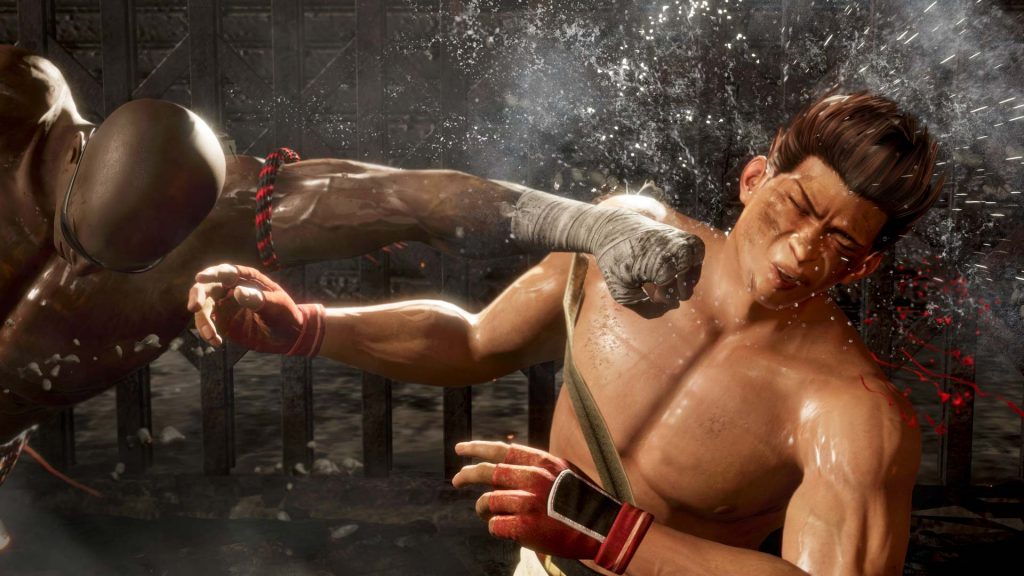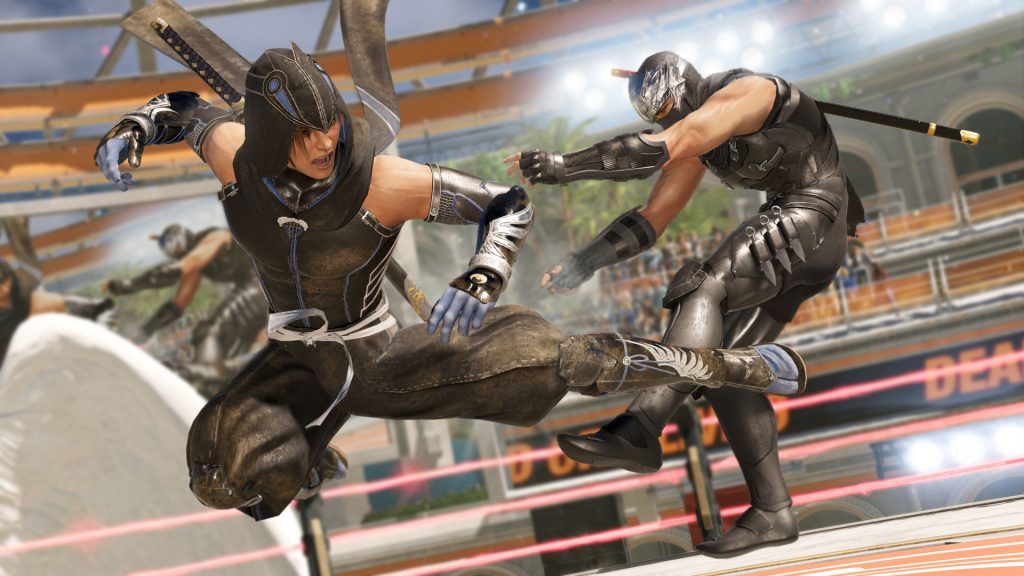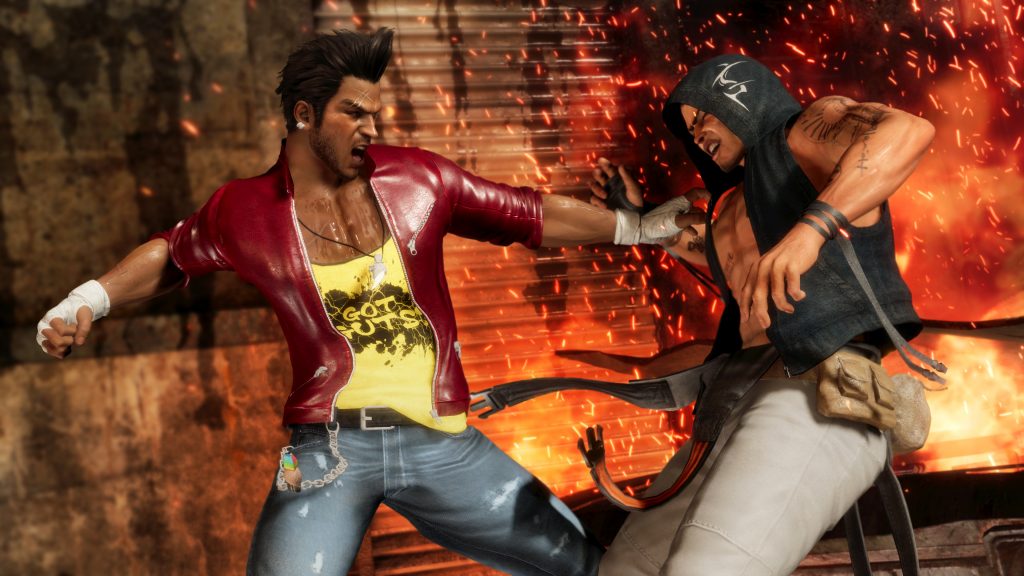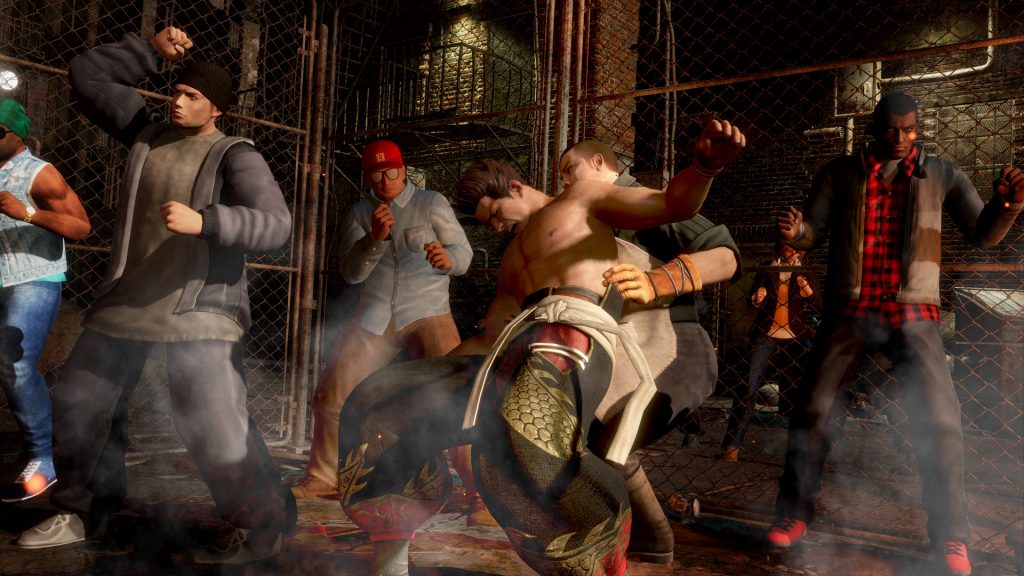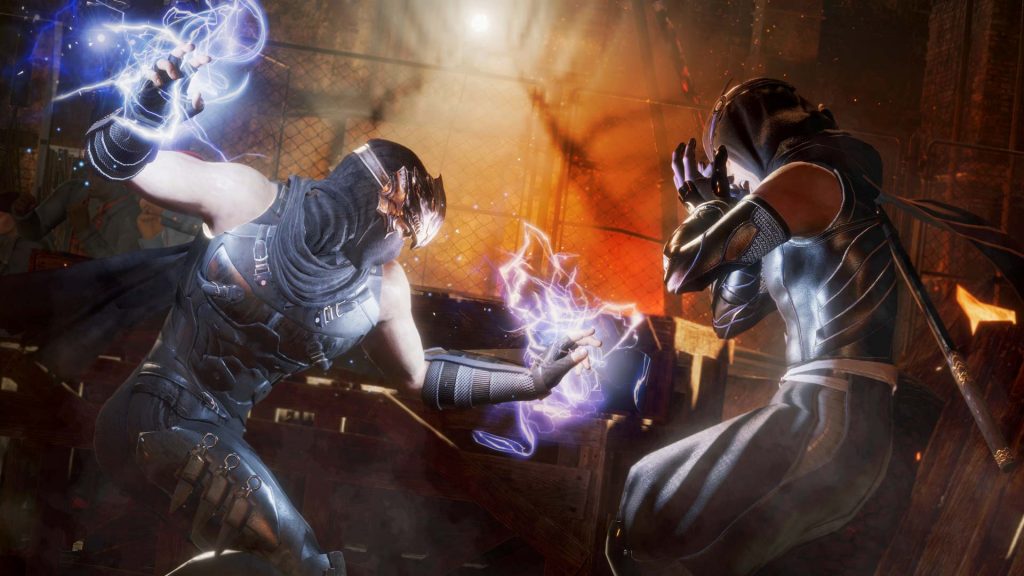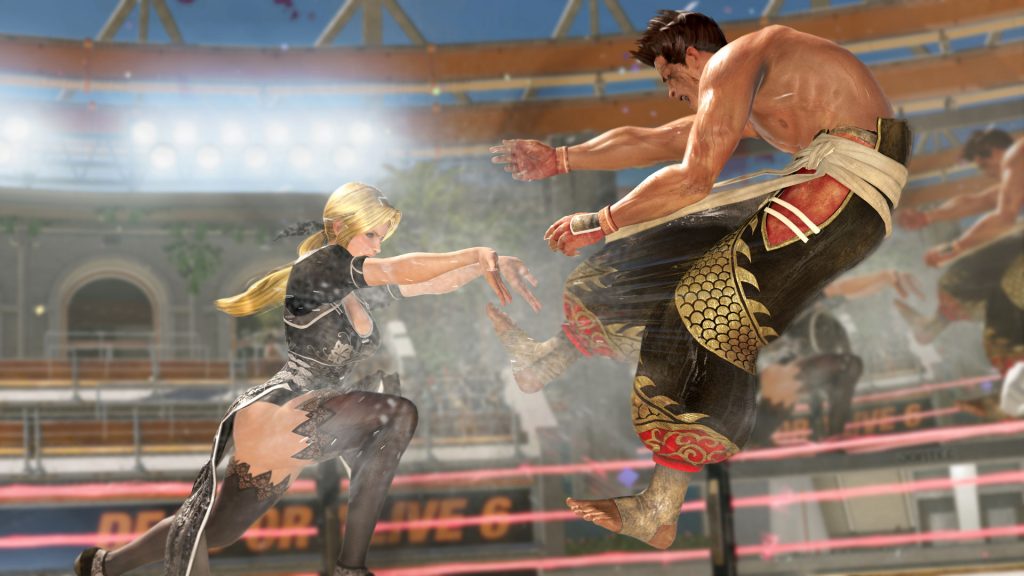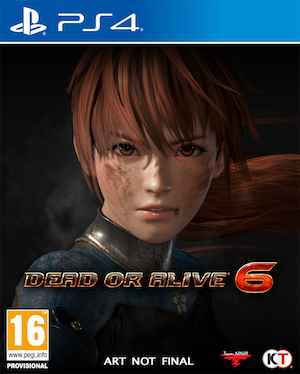
I was going to lose. After jumping out to an early lead, I’d lost my health advantage to a flurry of combos I had no answer for. My holds were off, I was trying to throw at the wrong time, and I wasn’t blocking enough. It was upsetting; I’d been playing well for most of the match, landing combos I’d practiced in training, using Critical Stuns and Fatal Stuns to extend them, hitting my Fatal Rushes, and using the stage to my advantage. Worse, I’ve been playing as Hitomi, one of my favorite characters, and someone I wanted to do well with. It was just a match against a computer, but I was still upset. I’d been playing well and I was blowing it. I had no answer. Then something happened: I recognized the combo my opponent was doing. The next move would be a mid punch, so I executed a mid hold. Hitomi caught the punch, flipped my opponent over her shoulder, and punched him square in the face, which won me the round and the match. I put down my controller, watched Hitomi’s victory video, and exhaled. Then I loaded into my next match.
That’s the kind of moment when Dead or Alive is at its best: when all of its systems come together. When you pull off the clutch hold or the great Critical Stun combo or hit that juggle just right or manage to extend a combo with a wall hit. And in that little moment, I had done it. I’d recognized what was coming, known how to counter it, and pulled off the timing. It felt really good, and it made me want to learn more of the game, and execute better.
"Holds are Dead or Alive’s counter system. By performing the right hold at the right time, you can counter any of your opponent’s moves, stop their combo, and deal damage. Holds also always put your opponent on the ground, or facing away from you, leading to easy follow-up opportunities."
The latter is the most important. If Dead or Alive 6 is about nothing else, it’s about execution. “But wait,” you might say, “isn’t that every fighting game?” It is, but it’s particularly true in Dead or Alive because of how simple the game’s core is. See, Dead or Alive 6 is extremely easy to jump in and play. There’s a button for punches (hereafter referred to as P), a button for kicks (hereafter referred to as K), a button for Break Attacks (a series of special moves that change depending on the character; hereafter referred to as S), a button for throws (hereafter referred to as T), and a button for blocking and holds (hereafter referred to as H), which I will explain momentarily.
There are a few moves that require pressing multiple buttons at the same time (usually P and K, or K and H), but otherwise, what you see is what you get. You want to do a throw? You press a direction and a single button. You want to break a throw? You press that same button. There are combos pre-baked into each character, but most of them are very simple. A common example is PPP, or PPKK, which are available to almost all characters. Some combos are harder than others (PP forward P down K, for a basic example), but almost all can be learned with practice. This means that the execution barrier for doing basic things is pretty low. The real depth, and the thing that makes Dead or Alive so cool, is holds.
Holds are Dead or Alive’s counter system. By performing the right hold at the right time, you can counter any of your opponent’s moves, stop their combo, and deal damage. Holds also always put your opponent on the ground, or facing away from you, leading to easy follow-up opportunities. To understand how they work, you have to understand how Dead or Alive’s moves work. DOA6 classifies its moves into three categories: low, medium, and high. Lows hit low and must be blocked by crouching; mediums will hit both crouching and standing opponents and must be blocked while standing; and highs hit high and will go over the head of a crouching opponent. They must also be blocked while standing.
"At 100%, you can spend the gauge by pressing forward and S to perform a Break Blow, a devastating, cinematic attack that deals enormous damage and knocks your opponent across the stage. These all also performed automatically at the end of a Fatal Rush if you have a full meter."
Got it? Cool. Performing a hold means recognizing where it will hit, what kind of move it is, and inputting the appropriate command to counter. To counter a high hit, you would press up and back on the analog stick or d-pad and H as the move is about to hit you, which counters all high attacks. To counter a low hit, you would press down and back and H. To counter a mid punch, you would press back and H, and a mid kick would be forward and H. You can choose to play with 3-way holds, which makes it so that pressing back and H will block both mid punches and kicks, and makes the system easier to learn, but 4-way holds are the way the game is meant to be played.
What the hold system allows you to do is essentially counter any move at any time, even if you are being combed. Say, for instance, you eat the first hit of a combo but know that your opponent’s second hit tends to be a mid punch. You could press back and H, perform a hold, end the combo, deal damage, and put yourself in a position to do more damage (hit them while they are on the ground or have their back to you). The downside of holds is that if you guess wrong, input the wrong command, or fudge the timing, you’ll eat a move you probably could have blocked. This does two things: first, it encourages the player on the offensive to mix up their attacks so they don’t become predictable and eat a hold; second, it encourages the player on defense to take risks, especially if they’re playing a character whose holds deal a lot of damage, like Leifang. It adds depth to the game, and makes every potential move dangerous for both players. It also brings us to Dead or Alive 6’s other core mechanics: Critical Stuns, Fatal Stuns, and Break Blows.
We’ll talk about the latter first. Every character has both a Break Gauge, which fills when characters are dealing or taking damage, and starts half full at the beginning of each match, and carries its current status between rounds. The Break Gauge works in conjunction with Break Attacks. Fatal Rush – a four hit combo performed by pressing S repeatedly – doesn’t require any Break Gauge, but everything else does. At half full, you can perform a Break Hold, which comes out immediately and will counter any move. It is also the way to use holds when being attacked by Fatal Rush hits. At 100%, you can spend the gauge by pressing forward and S to perform a Break Blow, a devastating, cinematic attack that deals enormous damage and knocks your opponent across the stage. These all also performed automatically at the end of a Fatal Rush if you have a full meter.
"Say you perform a Critical Stun. You can then use that time to launch the other character, and perform a juggle combo. This is where Dead or Alive 6 really opens up, allowing you to build freeform combos and really tailor your playstyle to what you want to do."
Then there’s Critical (performed with normal moves) and Fatal Stuns (performed with part of the Fatal Rush). These moves stun your opponent, allowing you to follow up with moves that you normally wouldn’t be able to perform together. Some moves have this property all the time; others only on counter hits. Regardless, this allows you to do some neat things, especially when you factor in juggles. Say you perform a Critical Stun. You can then use that time to launch the other character, and perform a juggle combo. This is where Dead or Alive 6 really opens up, allowing you to build freeform combos and really tailor your playstyle to what you want to do. Thing is, your opponent can still use holds, even in Critical Stun (they’re called Critical Holds when performed during this time), and stop you dead, so even having that knowledge is no guarantee of damage.
This is when things really get interesting: you might perform a Critical Stun, bait your opponent into using a hold, and then throw them for big damage. Or you might go to a combo you rarely use. Or you might end a Fatal Rush early to use the Fatal Stun to set up another combo. Or you might delay a move in a combo to throw your opponent’s timing off, or end the combo halfway, or… well, there’s a lot of possibilities. And that’s what makes Dead or Alive 6 so great: it’s always a chess match. You’re rarely in a position where you can’t turn the tables, where you have to sit and block and wait your turn. You always, always have options. You just have to execute better than your opponent. To play mindgames. To make hard reads. And the better player always wins.
Which is where the characters come in. Dead or Alive 6 features a large cast (24 characters), all with their own different playstyles. Some, like Bass, an enormous pro wrestler, trade complex combos for more limited, damaging strikes and huge throw and hold damage, while Jann Lee, Dead or Alive’s stand-in for Bruce Lee (there’s always gotta be one, right?) has fairly lousy throws and holds but deals heavy damage with strikes and has complex combos. I preferred characters that had a good mix of strikes and holds, with solid throw damage, so I gravitated towards character like Hitomi and Kasumi, the series’ protagonist. Even then, there’s a lot of differentiation. As a ninja, Kasumi has moves that allow to flip and teleport, while someone like Ryu Hayabusa of Ninja Gaiden mixes in stances that allow for unique follow-ups and chain extensions.
"The two new characters – Diego, a Mexican-American street fighter with powerful fists who is a delight to play as; and NiCO, a young scientist with the ability to control lightning – round out an impressive list of folks with a lot of options for any playstyle."
The two new characters – Diego, a Mexican-American street fighter with powerful fists who is a delight to play as; and NiCO, a young scientist with the ability to control lightning – round out an impressive list of folks with a lot of options for any playstyle. While it’s impossible to critique the game’s overall balance without testing every character against every other character at a high level of play, I never felt than any of the characters were broken or overpowered in my time with the game. Some characters are harder to learn and require higher execution than others (a character than emphasizes holds or command throws is harder to play than one that’s good at punching things), and some meshed with my style more than others, but I never felt any were unfair, because the game system is designed around letting me counter anything they could do. When I lost, I always knew why and what I needed to do to get better.
In addition to the game’s characters, the stages here are a standout. Like the characters, they’re incredible visually (this is a gorgeous video game), and having 14 available means that you’re unlikely to get bored of them. They also add quite a bit to the game’s strategy, as you can use them to your advantage. Knocking a character into a wall will allow you to extend a combo you otherwise couldn’t, and some of the stages effects are very cool. Knock a character into a crowd? The crowd will push them back to you, allowing you to get in more hits. Hit them into an explosive barrel? They’re going to take a bunch of damage, and alter the stage. Knock them into the giant octopus on the broken down old pirate ship? They’re gonna have a bad time, and you’ll end up on a lower level. The stages in DOA6 are both interesting and alter your strategy, and playing each one was an exercise in seeing what I could do at any given time.
There’s also quite a few modes to play. There’s tutorial, which will teach you every mechanic in the game and how to apply them to actual fights, and has a smaller subsection for each character; a free mode to practice in; command training, which will walk you throw every move in a character’s arsenal, complete with videos showing you what they look like; and combo challenge, which will show you how to put everything – holds, throws, Critical Stuns, Fatal Rush, and Break Blows – together for each character.
"Knocking a character into a wall will allow you to extend a combo you otherwise couldn’t, and some of the stages effects are very cool. Knock a character into a crowd? The crowd will push them back to you, allowing you to get in more hits. Knock them into the giant octopus on the broken down old pirate ship? They’re gonna have a bad time, and you’ll end up on a lower level"
Once you’re done learning, you can jump into the more standard fighting game modes: arcade (beat a bunch of enemies in a row), versus (play against friends or the computer), time attack (beat a bunch of enemies while shooting for the lowest time), and survival (beat as many enemies as you can before going down). They’re all good, but they’re also the stuff you’d expect from a fighting game.
There’s also Story Mode, which is similar to DOA5’s. In it, you’ll play through the game’s overarching narrative, switching between characters when it’s necessary for the plot. For most characters, that means getting ready for the next Dead or Alive tournament, but for Kasumi and friends, it means taking down the evil M.I.S.T., who are off doing evil corporation things. It’s silly and pretty lose (certain characters tie into the plot better than others, and certain storylines don’t resolve; you don’t play Hitomi’s last match in the tournament, for instance, and Rig’s story just kinda stops), but it’s also often funny (Brad Wong’s plot revolves around getting some mythical booze, for instance) and the character interactions are charming (a lot of these characters are friends just hanging out), and there are legitimate reasons for most of these fights because people are studying up for the tournament. Matches are only one round, and you can clear the whole thing in 2-3 hours, which makes it a fun diversion and a good way to try most of the characters.
My favorite mode was DOA Quest, which is essentially a mission mode. Each mission gives you a character and some objectives to accomplish: win the match, win in so much time, perform certain moves, do a certain number of holds, get a certain score, etc. Each objective (there are always 3) awards a star, and the more you earn, the more missions you will unlock. It’s a blast to play, and it actively makes you learn the characters. Best of all, it’s actively integrated with the game’s tutorial (as is the story mode), so if you’re having trouble with an objective, you can just hit a button and pop into the tutorial that will teach you how to do it. Once you’ve learned, you just pop back into DOA Quest.
"No matter what how you play, you’ll earn gold, which can be used to buy new hairstyles, sunglasses, music, lore, and outfits in DOA Central."
And of course, no fighting game is complete without an online mode, where you can choose between lobbies and ranked matches. The latter can be searched for by connection and whether you want to fight the same players more than once. You can also rematch if you don’t like the results. Again, standard stuff, but it seems to work pretty well.
No matter what how you play, you’ll earn gold, which can be used to buy new hairstyles, sunglasses, music, lore, and outfits in DOA Central. As of this writing, everything in DOA6 can be earned with gold, unlocked in DOA Quest, or obtained by leveling up, with the exception of additional DLC characters and outfits, and the game is pretty generous with its gold, so you won’t have to grind a lot unless you want to.
The unlockable outfits, however, do bring up the uncomfortable part of DOA – its treatment of its female characters. On the one hand, Dead or Alive 6’s cast is more than 50% female, and the characters hail from all over the world. The main characters in the plot – Ayane, Kasumi, NiCO, Ryu, Rig, Helena, Marie Rose, Honoka, etc – are also largely women and their decisions are what move the plot forward. The issue has always been with their character design and outfits. In that regard, Dead or Alive 6 is probably the best the series has been. Are the characters still designed to be that way? Absolutely. However, many of their unlockable outfits are pretty normal.
" For the most part, what the characters wear – and how they’re depicted – match up with who they are."
Hitomi alters between gis and street clothes. Helena is always wearing fancy dress that’s usually pretty modest. Kasumi and Ayane wear tight bodysuits because they’re ninja. Mila is dressed like a fighter or in normal clothes. For the most part, what the characters wear – and how they’re depicted – match up with who they are. Even the more revealing outfits make sense: Tina wears what she does because she’s a professional wrestler and that’s how they dress. Christie has an outfit that resembles SoulCalibur’s Ivy, but again, it tracks.
Some don’t, of course. Honoka – an 18-year-old Japanese woman with impossible proportions and outfits to match – is probably the worst offender. There are a couple others, but it’s still largely avoidable and far better than normal. Yes, there’s jiggle physics (which you can turn off) and characters sweat and powerful blows can still (tastefully) damage clothing and leave them with cuts and bruises, but little of it feels gratuitous. It’s still there, and in some ways, I imagine it always will be, but it’s better, and that’s worth noting. Maybe the DLC will change that. Who knows?
Ultimately, that dichotomy will probably determine how most people feel about Dead or Alive 6. This will always be the fighting game that spawned a creepy beach volleyball spin-off, and it’s impossible to talk about it without mentioning that. But it is a very good fighting game that’s both easy to pick up and play and has a lot of depth. I wouldn’t blame anyone for being turned off by what the series has been and, in some ways, still is. But I love fighting games. And like many of the characters here, I’m always looking for a new challenge. Dead or Alive 6 may not be perfect, but it gives me that. You can still play dress up if you want to. Me? I’ll be in the ring.
This game was reviewed on the PlayStation 4.
A diverse cast with something for everyone. Stages have variety. Easy to learn, hard to master. The hold system is fantastic. A lot of modes to play. Fantastic teaching tools. DOA Quest is a great take on mission mode.
It's still Dead or Alive, for better or worse.










